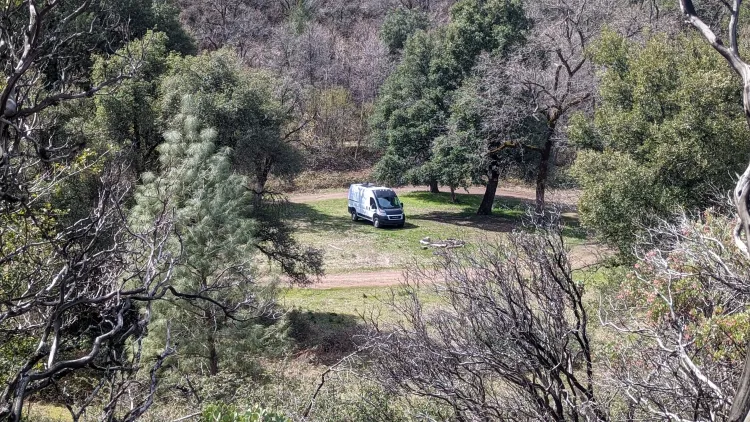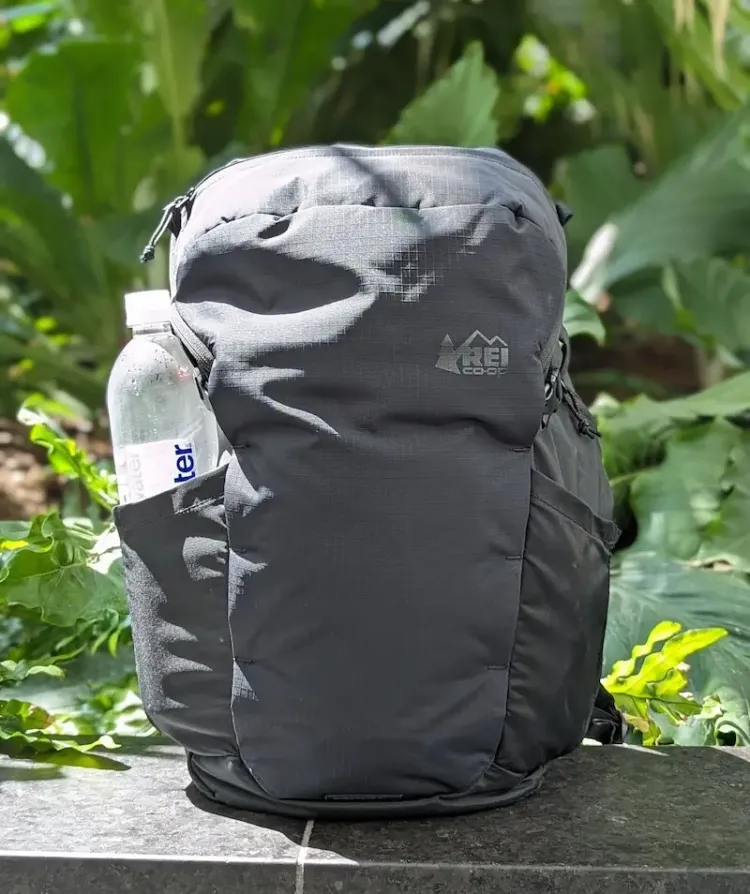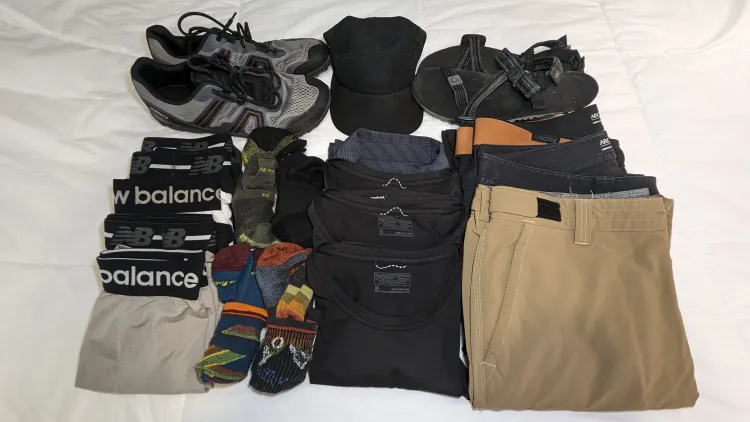Embracing The Minimalist Mindset During Travel
By embracing minimalist principles, you can streamline your travel experiences, focus on what truly matters, and create space for meaningful connections and unforgettable moments.
In this guide, we'll go over minimalism as it pertains to travel so you can learn what it means to embrace this style of adventure. We'll cover the minimalist way of thinking, examples of the travel minimalism lifestyle, some of the benefits, and how you can become a minimalist right now!
Table Of Contents
Want to explore more about minimalist travel? Check out The Ultimate Guide To Minimalist Travel from Autogenic Amusements.

What It Means To Embrace Minimalism

There are two main aspects that are involved with embracing minimalism: what you pack, and what you do. Embracing minimalism means doing what's necessary to live in a minimalist manner, no matter where you are in the world.
The first aspect of embracing minimalist travel is what you bring in your pack. Here are some questions to ask yourself when packing before your trip (you can also use this mid-trip):
- Is this item essential to my existence? Letting go of excess items allows you to focus on what truly matters.
- Does this item provide value to my life? Understanding which items amplify your life can help you eliminate those that don't.
- Does this item serve more than one purpose? Bringing items that serve more than one purpose will mean you need to pack less.
- Am I packing this item out of fear of the unknown? Work on your resourcefulness and understand that most situations can be dealt with abroad.
Mindful Travel is the second facet of minimalist travel. It means focusing more on quality experiences. Here are some key takeaways to ensure you embrace the mindset of minimalist travel:
- Travel Slowly. Don’t rush through to check sights off of your list. Take time to explore a destination in depth.
- Embrace Spontaneity. Having a light bag and some extra time in your schedule allows you to say yes to more travel opportunities. Some of the best experiences come from last-minute invitations, or having the time to stop at an interesting place when you didn’t plan on it.
- Accumulate experiences over possessions. Step out of your comfort zone and experience unique opportunities. Get off the beaten path (if it’s safe) and explore more of what a destination and culture offers rather than main tourist traps like markets and tours.
Embracing minimalism means focusing on what truly matters to you. This can be applied to the items you decide to take along, and the experiences you choose to pursue. When you apply these questions to your packing list and choice of experiences, you can quickly identify which items you need to have a good trip, and which you’re packing out of fear of the unknown.
The Minimalist Way Of Thinking

A minimalist way of thinking involves the shift from focusing on materialism and expectations towards a mindset of simplicity and a more intentional and meaningful life. Here are some ways that minimalists tend to approach their everyday life:
- Thorough planning. When trying to travel with so few items, it’s important to research what weather or climate you’ll be visiting. Doing so will help you plan your gear and clothing to best match the destination. Similarly, researching your destination can tell you a lot about what items you'll need to pack like a beach towel or hearty footwear.
- Multi-purpose everything. Being creative with the items you choose to travel with and ensuring you can use your items for more than one purpose allows you to travel with less. If it doesn't solve more than one problem, does it need to come with you?
- Let go of excess. I like to use the adage "If it has not been used in 6 months, it likely won’t be used". Of course, there are certain event-specific items like ski gear, a tent, or formal clothing. Stockpiling items to be used in the future isn’t the greatest use of your space either.
- Quality over quantity. This applies to both possessions and experiences. Minimalists often adopt a "buy-it-for-life" approach to purchases. Their experiences are often well thought out and highly rewarding.
- Embrace simplicity. Instead of trying to cram your schedule with as many activities as possible, focus on a few key activities that truly bring you joy.
While you don’t always need to be a minimalist, if you choose to do so all the time, it makes travel much easier. You won't need to worry about which shirt, electronics, books, backpack, etc to bring along with you. You also won't worry about being disappointed by a particular sight or event.
An Example Of A Minimalist Lifestyle

Minimalist travel calls for those from all walks of life. Perhaps one of the most common lifestyles that adopt travel and minimalism is being a digital nomad.
A digital nomad is someone whose work can be done independently of their location. They often choose to work abroad in foreign countries requiring only their computer and an internet connection.
A digital nomad is someone who is location independent for their employment, and often takes advantage of being able to travel. It’s easy to see how well these two lifestyles fit together to create a streamlined experience of work-life balance.
Since digital nomads spend their time travelling, it’s a waste of resources to own an apartment or home. As minimalists, a home where you don’t spend most of your time wouldn’t be considered essential, so there is a need to cut that out.
A minimalist likely has few possessions and an extreme minimalist only lives with what they can fit in one single bag. Of course, a digital nomad will need to bring additional items like a laptop or other electronics so they can work online. Due to their choice to be nomadic, they will likely keep their possessions to the bare essentials.
A digital nomad might also only bring clothing that is best suited to their lifestyle. A capsule wardrobe, and items that work no matter the setting will be critical to a minimalist who travels.
You may also find digital nomads choosing to stay in one location for longer periods of time. Sometimes renting out a room in a villa for a month at a time, or even rent an apartment so they have a home base for 6 months in a particular destination. Travelling slowly in this manner allows one to gain a greater sense of knowledge about a particular area.
Since digital nomads are often location independent, they may choose to travel and work from locations where their funds take them further. Unless there's something specific holding you to one location, why not travel to a place where the cost of living is cheaper?
While digital nomads are not the only people who can embrace minimalist travel (van lifers count too!), they often use all the skills and techniques that a minimalist traveller would. Living and working abroad has a lot of benefits that go hand in hand with minimalist travel.
Staying Mindful While Travelling

You don’t need to master minimalism or travel before you begin combining both of them together. Were all bound to make mistakes in our choices of activities.
You’re able to adjust as you go. After all, how will you know what work until you actually try it? We’ll share some tips below to help keep you mindful while travelling.
- Get rid of what you’re not using. When you initially pack, you might have thought you would use everything. If you find yourself carrying items you’re not using and likely won’t, you can donate, consign, or throw them out.
- Engage your senses. Focus on the sights, smells, sounds, and tastes of your surroundings. This will help you experience everything a location has to offer.
- Disconnect from technology. Taking a break from things like screens and social media means you get to spend more time focused on your surroundings and environment.
- Disregard FOMO(Fear Of Missing Out). Comparison is the thief of joy. Your travels are your own adventure. Don't get caught up in what seems popular on Instagram. Sometimes your experience might not be the same as what you've seen and heard.
Being mindful in your travels is a fantastic way to embrace minimalism while travelling. Between techniques like cutting back on your belongings, engaging your senses, disconnecting from technology, and focusing on what you actually want, you can indulge in more rewarding travel experiences.
Do Minimalists Find Happiness?
Minimalists can find happiness in their way of life. Whether through less worry about their belongings, fewer choices of what to wear, or better experiences while travelling. Below, we'll show you some of the benefits and ways that minimalists find happiness in their travels:
- Imagine bringing along multiple suitcases when you’re travelling. How cumbersome it is to move all of that luggage between accommodations. What about if an airline loses one of your suitcases? Minimalist travel solves these issues and many more allowing us to be more mobile and have more peace of mind about our belongings.
- Minimalism and the "capsule wardrobe" provides greater simplicity in the decisions you make about what to wear. When all of your items are functional and matching, you take out the need to decide what to wear, or if something is appropriate for a certain circumstance. This action leads to less worry about what you wear.
- There exist some financial benefits of minimalism too. Minimalists can save money on luggage fees, or even on a mode of transportation that can accommodate a suitcase. Conversely, the focus on fewer possessions means fewer expenses on material items. Who doesn't like saving money?
- Embracing minimalism during your travels allows you to live more mindfully and be more in the moment. This leads to more rewarding experiences and a greater sense of achievement in your travels.
While there are many ways to find happiness in your travels, it's easy to acquire the same result with minimalism in mind. One of the greatest pursuits of minimalism is being more content with life, so, minimalists are generally happy.
How To Become A Minimalist Right Now
While becoming a minimalist doesn’t mean throwing away all of your stuff and living abroad in hostels, there are some smaller steps that can help you get there more gradually.
- If you plan to buy something online, leave it in the checkout cart overnight. This will help you save money from impulse buys. This allows you to think it over to see if you really need the item or not.
- Get rid of spares or duplicates. It’s easy to hoard and buy items that you might eventually need. Ensuring you don’t have duplicates means fewer items to worry about and more space for other necessities. (Do this within reason. Medications, single-use items like groceries, etc. make more sense to have spares around.)
- Digitize as much as possible. Not owning a library of books and multiple electronics that serve the same purpose can help cut back on your belongings and streamline your experience. Check out this article on using your phone as the ultimate travel tool!
- Stick to only the essentials. Determine which items are necessary to your well-being and keep only that. Other items don't provide value to your life.
Embracing minimalism right now doesn't need to be a complete overhaul of your life. It can be done gradually, step by step, and sustainably, leaving you feeling happier even if taking small steps.
The 15-Minute Rule Of Becoming A Minimalist
The 15-minute rule of minimalism is a set amount of time you dedicate to decluttering a certain aspect or category of your belongings. Using this technique can allow you to stay on top of your possessions and provide an opportunity to re-evaluate what you bring along in your travels. Here are the steps to help you with the 15-minute technique.
- Decide which category of items you'd like to address (clothing, dishes, emails, photos, cleaning, etc.).
- Start a timer for 15 minutes.
- Sort through the items keeping only what you need, what brings you value, and what you truly cherish. Alternatively, work through the task for a set amount of time.
- Donate, sell, or discard the excess items that didn't meet the criteria to be kept.
Some categories might take more time to complete than others(or if you're just starting), it is fine to come back to the category with another 15-minute interval. What's important is to use this method regularly so you can stay on top of your minimalism journey. Similarly, working on a specific task for just 15 minutes allows you to be further along than had you not done it at all.
Conclusion
Embracing a minimalist mindset during travel enhances your experiences by packing in a simpler way, being less burdened by your possessions, and focusing on high-quality experiences. There are a plethora of benefits to practising minimalist travel like saving money and being more mobile. Taking actions like downsizing, decluttering, and being more mindful are some great ways that you can embrace minimalism before, during, and after your travels.
I'd love to hear from you!
What are some of the ways you've learned to embrace minimalist travel? Anything you'd like to add to help others? Let me know in the comments below.







Member discussion